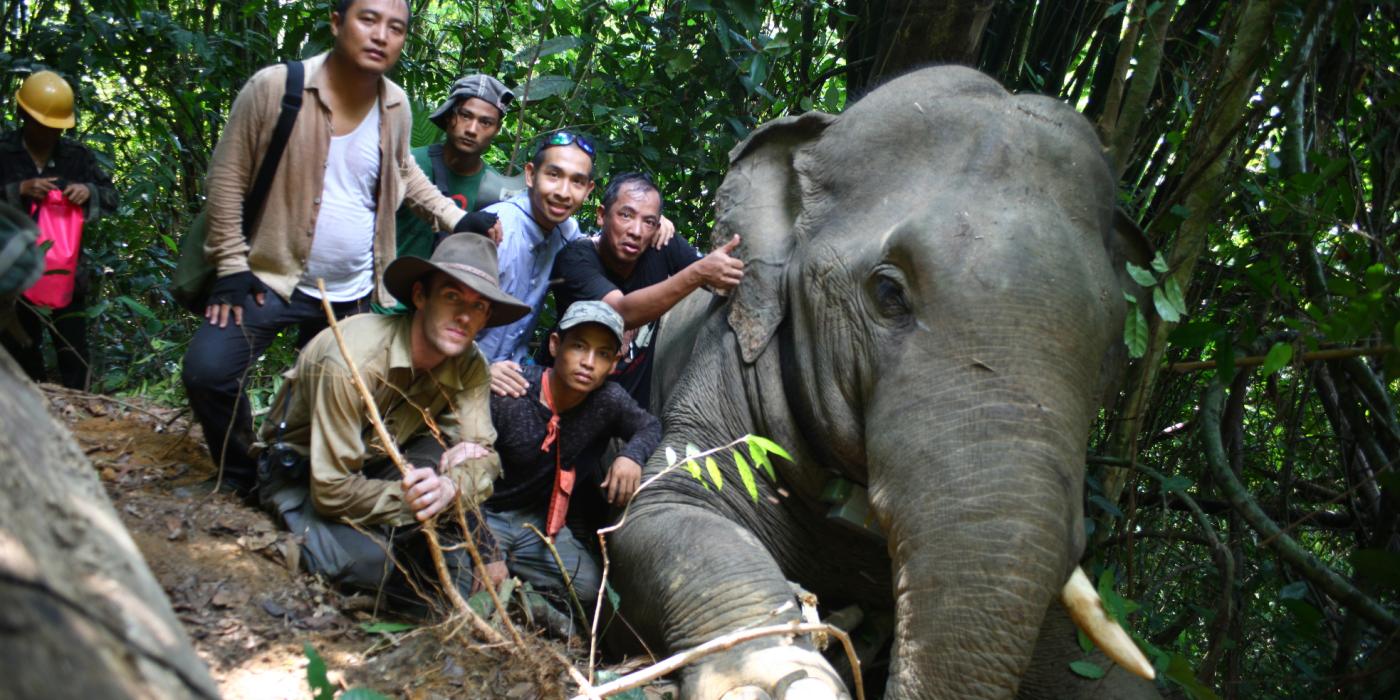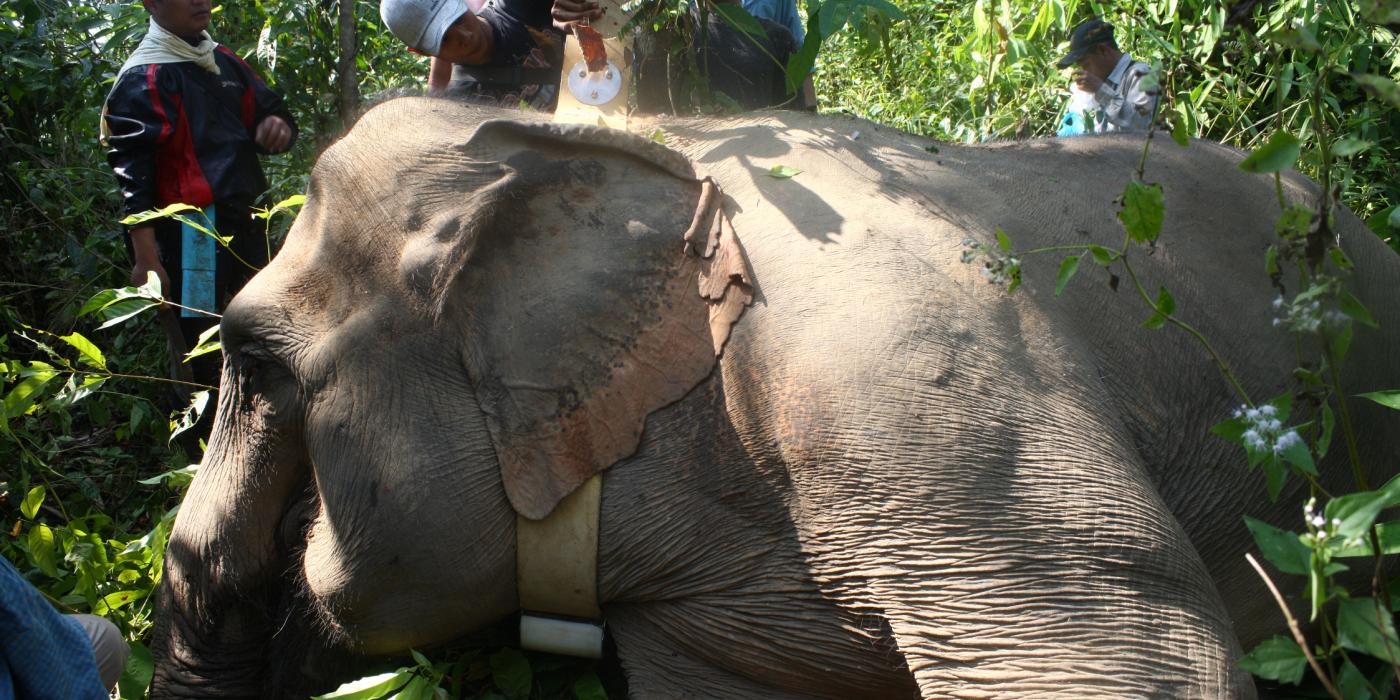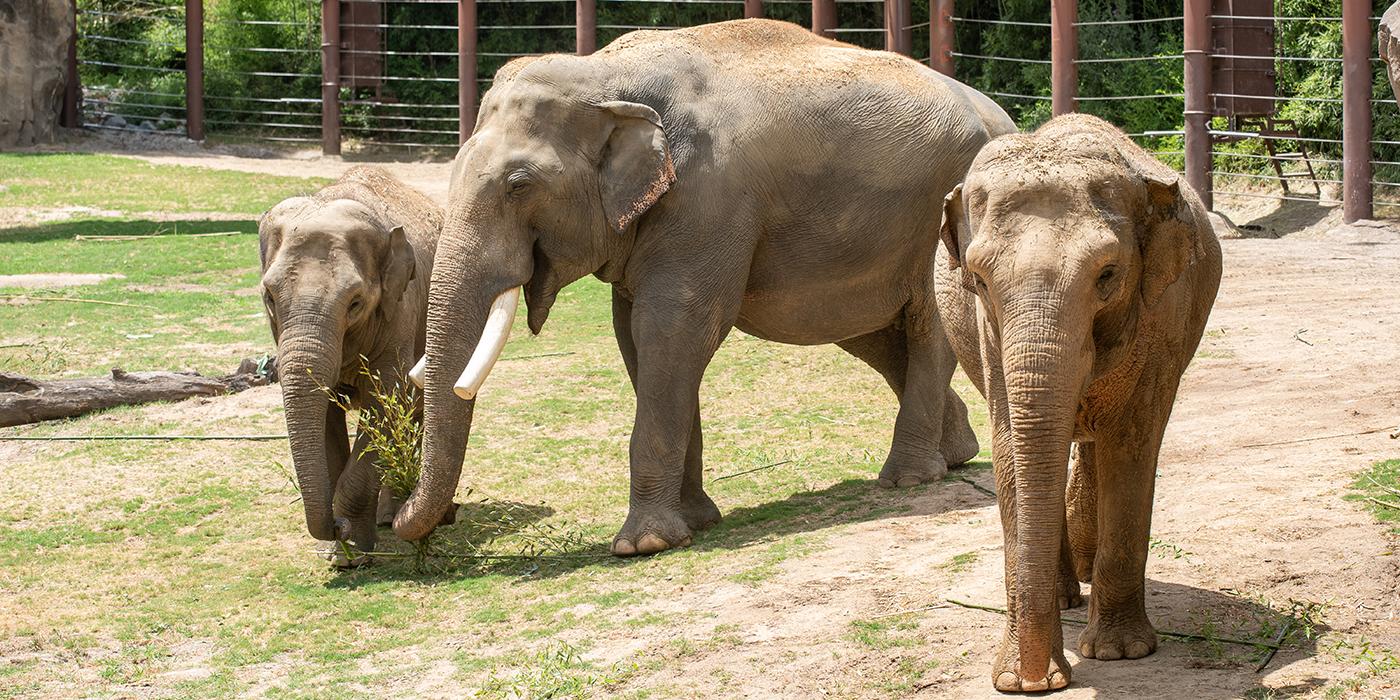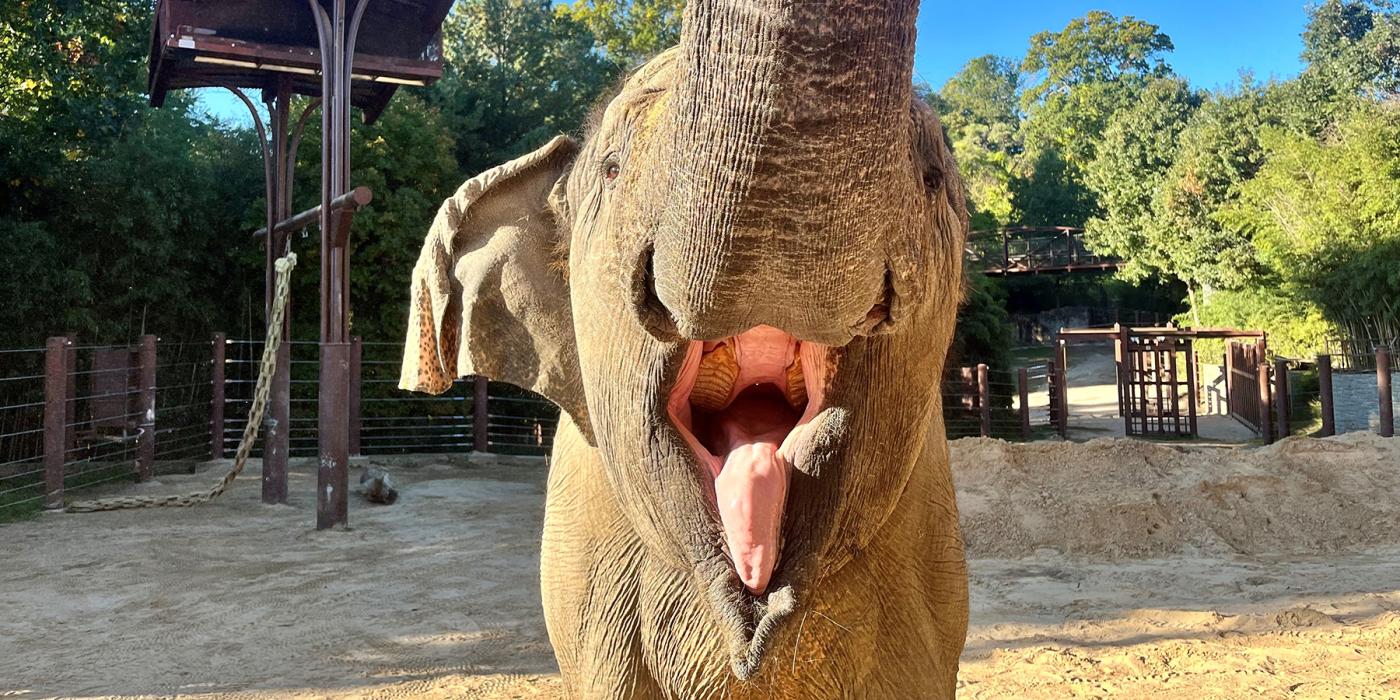Earth Optimism: Helping Wild Elephants Where They Roam
Why is this Asian elephant wearing a collar? He’s one of four pachyderms whose movements and behaviors are being tracked via satellite! This information helps SCBI scientist John McEvoy and partners understand the causes of human-elephant conflict and find solutions to help animals and people coexist.
What can you learn from a satellite collar?
The main question we are trying to answer is how elephants use the landscape. How frequently do they use certain parts of the landscape? How do they move across it? Do males roam far and wide, or are they restricted? Do certain areas—ones with roads and developments—act as a barrier or bottleneck?
As tourism and development start to take off in Myanmar, this is a crucial time for scientists to learn how elephants use the land. Our research feeds into helping the government and local communities strike the right balance of how to live with elephants.
How do you track the elephants?
The collar consists of a GPS satellite tracking unit, the collar itself, and a counterweight that ensures the tracking unit stays at the top. When you add all those elements together, the collar weighs just under 30 pounds (14 kilograms). The elephants can be tough on the collars; they tend to rub them on rocks and trees. The key for us is to create a collar that is sturdy enough to withstand wear and tear from an 11,000 pound elephant.
We returned from Myanmar only a few weeks ago, but I already see the elephants use quite a bit of the landscape, including forest corridors and various other places. Watching them move around in real time is really exciting!
How do you select which elephants to collar?
We wanted to collar large, solitary males because they travel a lot farther than the female herds and tend to run into conflict with humans more frequently. We were looking for them in an area in the south of Myanmar, a place called Lenya, where elephants had come into contact with palm oil plantations and the surrounding villages.
During this trip, our team collared three males. We also found a large female—likely the matriarch of her group—and put a collar on her as well so we could get information about how and where her herd travels.
How long does it take to find the elephants?
Locating the elephants takes a combination of vehicle and man power. About 60 percent of Myanmar is covered in forest, which is great habitat for the elephants but challenging for scientists who are trying to locate them. Luckily, we have a terrific partnership with the forestry department, and they connected us with a group of Mahouts who are expert trackers.
We go as far as we can by car but eventually get out and carry the 30-pound collars either over our shoulders or in a backpack. We could spend either a half day or full day hiking—it depends on the elephant and the day!
What threats do Myanmar’s elephants face?
There are a number of factors that are contributing to Asian elephant population decline in Myanmar. Access to critical elephant habitat is restricted by human development. As humans clear forest for agriculture plantations like palm oil, farmers and villagers experience elephants raiding their crops and destroying their property. New roads through elephant habitat have led to collisions with vehicles as well.
Poaching, too, remains a growing problem in Myanmar and other elephant range countries. There are more and more documented reports of poaching events, including some of the elephants we have collared in previous studies. Satellite tracking gives us and our partners real-time information about where elephants are moving in high risk areas and reveals the scale of the poaching problem. We want to emulate our colleagues in Kenya who have had great success with anti-poaching programs in the past.
Based on our previous studies that looked at expert surveys, habitat availability and quality as well as interviews with local villagers and other people around the country, we estimate the Asian elephant population in Myanmar to be in the range of 1,500 to 2,000 individuals. That’s down from the original estimate of 9,000 individuals.
How does tracking elephants’ movements increase their chance for survival?
SCBI's Conservation Ecology Center has been working on Asian elephant conservation in Myanmar for fifteen years. In that time, we’ve been able to learn where the elephants go and what resources they need in order to survive. But, we don’t do it alone. We have a lot of great people who work with us on the ground—including the locals, government officials, and non-governmental organizations.
If we can keep this level of collaboration growing, I’m optimistic that we can develop programs that help mitigate the challenges elephants and humans face where humans and elephants interact.
This story appears in the April 2017 issue of Smithsonian Conservation Biology Institute News. Scientists and in-country partners involved in this project include Aung N. Chan, Christie Sampson, Melissa Songer, Peter Leimgruber, Aung Myo Chit, Christy Williams, Paing Soe, Mark Grindley, Naymyo Shwe, La Minn Yinyi, Zaw Min Oo, U Chay, and the Mahout tracking team.
Related Species:





